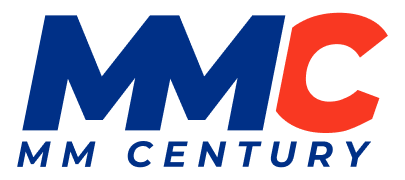In today’s technology-driven world, electronic waste—or e-waste—is one of the fastest-growing waste streams. From outdated office equipment to discarded circuit boards, businesses generate a significant amount of e-waste that must be properly managed.
Understanding how to dispose of e-waste in Malaysia is the crux to protecting both the environment and your company’s reputation.
Here, we explain what qualifies as e-waste, outline your legal responsibilities, and show how MM Century supports e-waste recycling.
What Qualifies as E-Waste?
E-waste refers to any electrical or electronic equipment that is no longer functional, has reached the end of its usable life, or is considered obsolete. These discarded devices often contain hazardous substances that require proper handling.
In a business setting, common examples of e-waste include:
- Laptops, desktops, and computer peripherals.
- Printers, copiers, and scanners commonly found in office environments.
- Telecommunication equipment including modems, routers, and PBX systems.
- Power supplies, UPS units, and batteries, particularly lithium-ion or lead-acid types.
- Circuit boards, semiconductors, hard drives, and other internal components.
- Electrical cabling, adaptors, and peripheral devices.
In Malaysia, e-waste falls under SW 110, a category of scheduled waste identified by the Department of Environment (DOE).
As such, it must be disposed of through licensed facilities and service providers, following strict environmental and safety protocols.
Read More: Embracing Carbon Neutrality – Mitigating the Environmental Impacts of Data Center E-wastes
Environmental Impact of Improper E-Waste Handling
Improper disposal of e-waste presents significant risks to environmental health and public safety. Many electronic items contain unsafe substances such as lead, mercury, cadmium and flame retardants. If dumped in landfills or incinerated, these toxic elements can:
- Leach into soil and contaminate groundwater, affecting local water supplies and agricultural land.
- Exert toxic fumes and particles into the air during open burning or incineration, contributing to air pollution and respiratory illnesses.
- Disrupt natural ecosystems and harm wildlife, particularly when animals are exposed to contaminated soil or water.
- Pose long-term health risks to humans, including neurological damage, increased risk of cancer, and reproductive disorders, from prolonged exposure.
These consequences are localised, and may accumulate over time, thus contributing to broader problems. Businesses should opt for responsible e-waste recycling to actively prevent these repercussions and support a more sustainable circular economy.
Legal Requirements for E-Waste Disposal

Under Malaysia’s Environmental Quality (Scheduled Wastes) Regulations 2005, companies producing e-waste are legally required to:
1. Register with the DOE as a scheduled waste generator
All businesses generating scheduled waste must officially register to obtain the necessary authorisations for managing and disposing of it.
2. Properly label and store e-waste on-site
E-waste must be stored in clearly marked containers, indicating the waste code, date of generation, and relevant hazard symbols. Storage areas must be secure and isolated.
3. Engage DOE-licensed contractors for collection and recycling
Only transporters and facilities licensed by the DOE are permitted to handle scheduled waste. This ensures that waste is transported, treated, and disposed of compliantly. You can verify licensed facilities on the e-SWiS portal, where MM Century is listed as an approved provider.
4. Submit inventory reports via the e-SWIS system
Businesses must report all scheduled waste movements and disposal activities through the Electronic Scheduled Waste Information System (e-SWIS).
5. Maintain waste management records for a minimum of three years
Documentation such as transport manifests, disposal certificates, and contractor licenses must be retained and made available for inspection during DOE audits.
Read More: MM Century Ushers in a New Era with Full E-Waste Recovery Facility at Penang Science Park North
E-Waste Recycling Process with MM Century
At MM Century, we offer an end-to-end solution for e-scrap recycling in Malaysia that is secure, transparent and environmentally sound. Our process includes:
1. Asset tagging and serial tracking
Every item is barcoded and logged for complete traceability throughout the recycling lifecycle, ensuring full accountability and inventory control.
2. Secure data destruction and degaussing
We eliminate sensitive data from storage devices using certified data wiping and degaussing procedures before any physical destruction is carried out.
3. Safe collection and transportation
Our trained personnel handle all e-waste using secure transport methods and DOE-approved vehicles to prevent leakage, loss, or contamination during transit.
4. Recycling at licensed DOE-approved facilities
All items are processed in environmentally regulated facilities, where materials such as metals, plastics, and circuit components are separated and recovered for reuse.
5. Regulatory documentation and reporting support
We provide records of disposal, including waste manifests, certificates of destruction, and compliance documentation to support internal audits or DOE reporting.
How to Schedule a Pickup or Drop-Off with MM Century
MM Century makes e-waste recycling in Malaysia easy and accessible for businesses of all sizes. Our flexible e-waste service options are designed to meet your operational needs while ensuring full compliance with DOE regulations.
With MM Century, you can:
- Arrange a scheduled e-waste pickup via our online form or customer support team.
- Coordinate a drop-off at one of our designated collection points.
- Request additional services such as data erasure certificates or inventory audits.
Ready to recycle your e-waste responsibly? Take the first step towards secure, compliant, and eco-friendly e-waste disposal by scheduling an e-waste pickup with our team.

